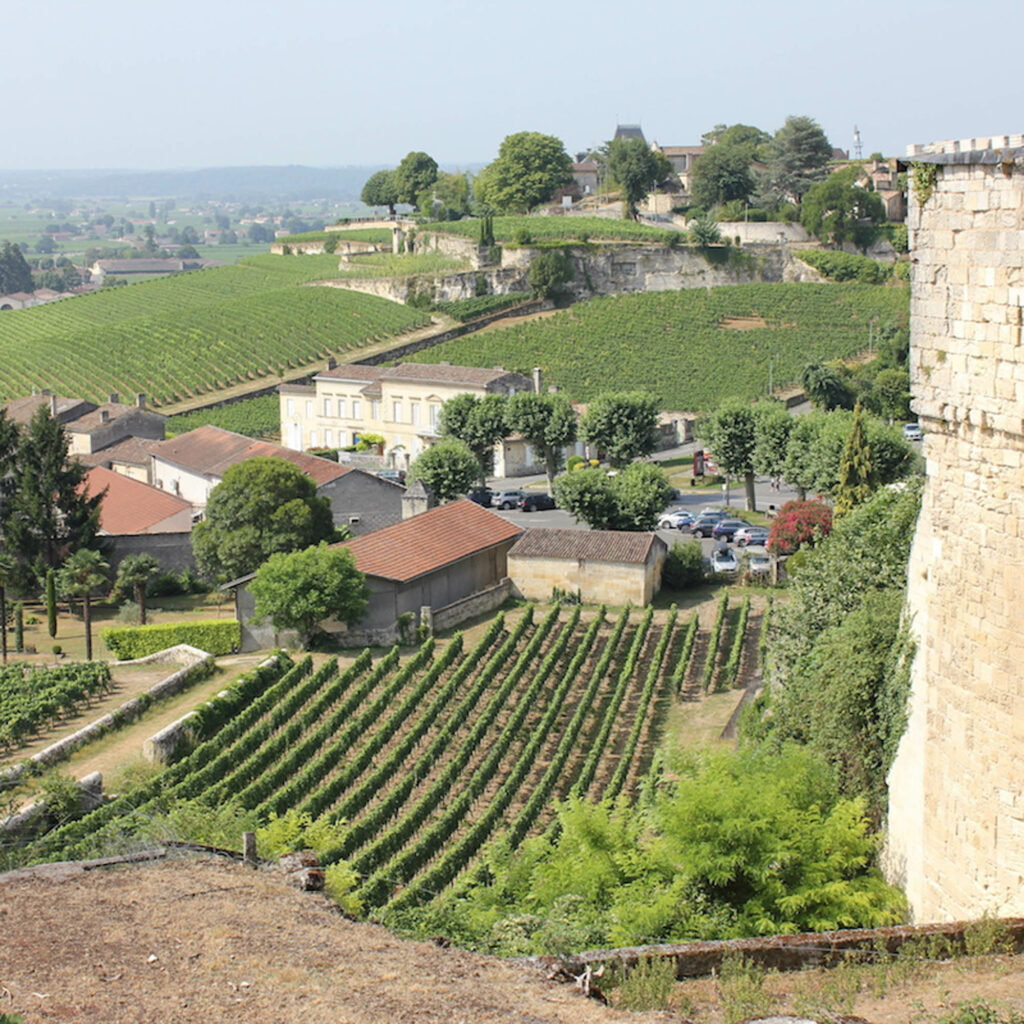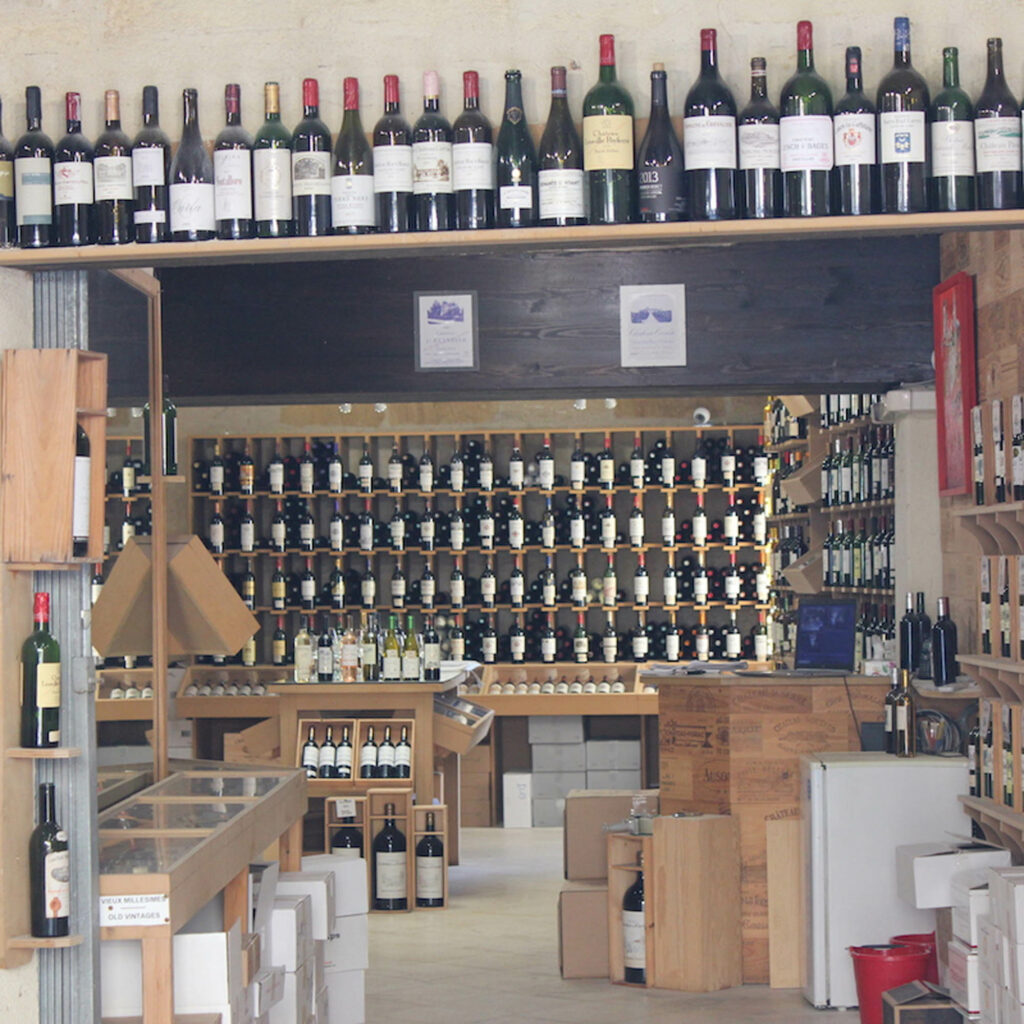

Saint-Émilion is a medieval wine Disneyland, where Bordeaux’s history and wine culture come together most naturally. Perched on a limestone plateau overlooking the Dordogne Valley, this medieval village has been growing vines since Roman times. Today, its cobbled streets, golden stone façades, and rolling vineyards tell a story where wine and daily life remain inseparable.
Recognized as a UNESCO World Heritage Site, Saint-Émilion is built entirely from the same limestone that defines its terroir. Beneath the village lies a maze of ancient tunnels and cellars carved from the rock itself, silent witnesses to centuries of winemaking.
The region’s mix of limestone, clay, and gravel soils gives its wines remarkable structure and elegance, producing reds known for balance, freshness, and fine tannins.

On Bordeaux’s Right Bank, Merlot takes center stage, often blended with Cabernet Franc for depth and aromatic lift. The result is supple, fruit-driven wines that age beautifully, developing layers of truffle, spice, and dried fruit over time. The best-known names: Château Ausone, Château Cheval Blanc, and Château Angélus, represent the heights of Bordeaux craftsmanship, but much of the region’s magic lies in its smaller, family-run châteaux. Many still welcome visitors personally, pouring wines that capture the same limestone purity and quiet intensity as their famous neighbors.
A Village That Invites You to Slow Down
Saint-Émilion is made for wandering. You can stroll from a 12th-century cloister to a Grand Cru Classé estate in just a few minutes. In the main square, cafés spill onto cobbled terraces where locals and travelers share glasses of ruby-colored Merlot. Follow the narrow lanes up toward the bell tower for sweeping views of the vineyards, or down to the cool shadows of the monolithic church carved from the rock itself. Every turn offers another glimpse of how deeply the village and its wines are connected.
Outside the walls, the landscape unfolds into quiet hamlets and gently sloping vineyards — Saint-Christophe-des-Bardes, Saint-Laurent-des-Combes, and Saint-Hippolyte — where winemakers greet you with the easy warmth of friends. Tastings here often end with stories, laughter, and the inevitable promise to return.
Food, Wine, and a Sense of Place
As you’d expect, Saint-Émilion’s food pairs effortlessly with its wines. Long lunches feature magret de canard (one of our most favorite local dishes), beef entrecôte grilled over vine cuttings, and local cheeses matched to Merlot’s plush texture. Many châteaux now host intimate wine lunches or cooking experiences, where you can savor dishes made with ingredients from the region. And we won’t let you leave without trying the traditional Saint-Émilion macarons, soft, almondy, and made from a centuries-old recipe passed down through local convents.


Neighboring Appellations: Just beyond the village, Lussac, Puisseguin, and Saint-Georges-Saint-Émilion offer welcoming estates and excellent wines at remarkable value.
A Day in Saint-Émilion
A perfect day might begin with a morning visit at a family-owned château, tasting Merlot straight from the barrel. Lunch follows on a sunny terrace overlooking the village, paired with a Grand Cru from the same soil you’ve just walked. The afternoon is for exploration — maybe the underground church, a hidden cellar, or a quiet glass at a café near the bell tower. By evening, the village glows gold in the setting sun, and you understand why Saint-Émilion remains one of the most beloved corners of Bordeaux.
A perfect day might begin with a morning visit at a family-owned château, tasting Merlot straight from the barrel.
Lunch follows on a sunny terrace overlooking the village, paired with a Grand Cru from the same soil you’ve just walked.
The afternoon is for exploration. Maybe the underground church, a hidden cellar, or a quiet glass at a café near the bell tower.
By evening, the village glows gold in the setting sun, and you understand why Saint-Émilion remains one of the most beloved corners of Bordeaux.
